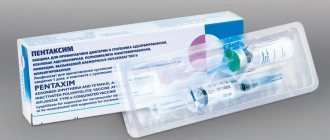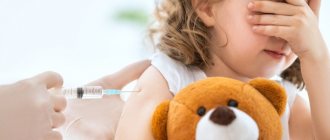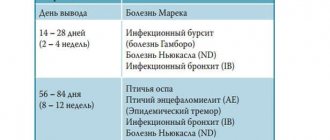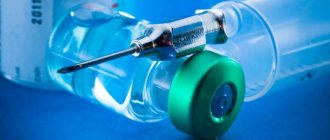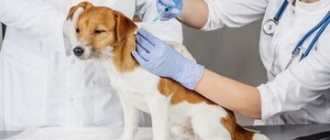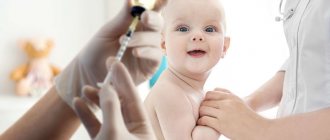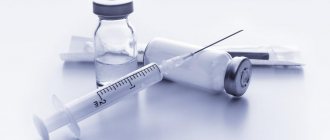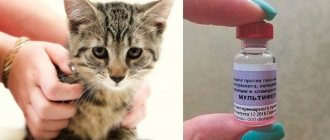Timely vaccination of cats will help prevent the development of some infectious diseases that are dangerous to health and life. A veterinarian will help determine which vaccinations should be given at a certain age, as well as the type of vaccine. Before vaccination, the pet’s health status must be checked, its individual characteristics taken into account, and its medical history carefully studied. These measures are necessary to prevent post-vaccination complications.
What is vaccination?
This is a procedure during which monovalent, polyvalent, active or dead vaccines containing weakened viruses or fungi are introduced into the cat’s body. Once inside the body, the pathogen stimulates the immune defense, so that in case of infection the animal can effectively overcome the infectious disease. Vaccinations will help protect against rabies, feline distemper, rhinotracheitis, leukemia, calicivirus, panleukopenia, chlamydia, infectious peritonitis, trichophytosis, microsporia.
Even domestic cats that are constantly at home and do not go outside need to be vaccinated, because the infection can enter the room with the owner’s clothing. Before the dacha, if you also plan to take the animal with you, vaccinations are required.
What types are there?
Vaccines for cats and kittens are as follows:
There are different types of vaccination, during which a weakened pathogen is introduced into the body, stimulating the immune system.
- Monovalent. The drug helps develop immunity against one type of infectious disease.
- Polyvalent. A complex vaccination for cats, after administration of which antibodies are formed aimed at combating two or more pathologies.
- Active. The drug contains a weakened virus or fungus that causes asymptomatic infection with the subsequent development of a protective immune response. This vaccination lasts for a long time, protecting the cat from infection.
- Inactive. They contain a dead virus, to which protection is formed that lasts for a short time.
How to prepare a cat for vaccination
The animal must be healthy before vaccination. The vaccine has the opposite effect on a weakened body - the cat can get sick or even die. Before vaccination, it is necessary to carry out treatment against internal and external parasites. To get rid of fleas, drops are used on the withers, preferably without fipronil in the composition. The substance is poisonous and causes poisoning if it enters the body.
Deworming is recommended after stool analysis. For the sake of prevention, anthelmintic drugs should not be given, as they have a negative effect on the body. Based on the diagnostic results, the doctor will select an effective remedy for helminths, depending on the type of parasites. To exclude chronic and infectious diseases, a blood test is performed. Two weeks before vaccination, it is recommended to protect the cat from communication with other animals.
What diseases should you vaccinate against?
The main diseases against which it is recommended to vaccinate cats are:
- Calicivirus. The virus is transmitted by airborne droplets. As it progresses, it causes fever, conjunctivitis, the formation of ulcers on the mucous membranes of the mouth and nose, and damage to the joints.
- Rhinotracheitis. Transmitted by air and contact rubble. Accompanied by inflammation of the oronasal cavity and conjunctiva.
- Panleukopenia. Spreads through biological fluid - saliva, urine, feces. After invasion, inflammation affects the stomach and intestines. The disease is dangerous for adult cats and small kittens. Accompanied by acute abdominal pain, indigestion, and fever.
- Rabies. It is transmitted mainly through the bites of an infected animal. It is considered one of the most dangerous infectious pathologies found in cats and dogs; the mortality rate is very high. Characteristic signs: excessive salivation, loss of appetite, uncontrolled aggression.
- Chlamydia. It is diagnosed mainly in kittens aged 5-6 weeks. At first, the temperature rises slightly; as it progresses, the animal suffers from a cough, runny nose, and suppuration of the eyes.
- Infectious peritonitis. In purebred pets it often develops at 1 year of age, in outbred pets - after 7 years. The animal’s immune system is affected, and the symptoms can be anything, which makes timely diagnosis difficult.
- Trichophytosis, microsporia. Both diseases are caused by fungi and are considered highly invasive. Characteristic signs are hair loss, the formation of inflamed, flaky areas on the skin, itching, changes in the shape and density of the claws.
Features of pathogens and the course of diseases for which vaccines are created
In short, the number of vaccinations that a cat will have to receive is quite limited. Vaccines for:
- Calcivirosis is an unpleasant disease that in 50% of cases will lead to the death of the animal. Its symptoms are dominated by high fever, ulcers on the tongue and oral mucosa, conjunctivitis, excessive salivation and lacrimation, cough, and pneumonia. A cat can become infected by inhaling the smell of other pets' excrement from shoes, during walks, or through direct contact with a sick animal using the airborne method of transmission. Not dangerous for people;
- Feline distemper, also known as panleukopenia, has a mortality rate of 90%. Symptoms include severe vomiting, diarrhea, high fever, damage to the heart and lungs, severe dehydration;
- rhinotracheitis - caused by the feline herpes virus. The mortality rate reaches 30%. It can become chronic with frequent relapses and is difficult to diagnose. Symptoms include fever, cough, conjunctivitis, nasal congestion;
- Feline chlamydia is caused by the chlamydia parasite. Human infection may occur. It affects the respiratory, digestive and genitourinary systems, sometimes in isolation of one of them. Often accompanied by conjunctivitis;
- Rabies is the most dangerous poorly controlled disease that is transmitted to humans. It is characterized by damage to the meninges, irreversible and fatal in 100% of cases.
When the owner is truly concerned about the health of his pet, he will not ignore the possibility of preventing such serious diseases, and will do everything possible to preserve the health of the animal.
When to get vaccinated: schedule
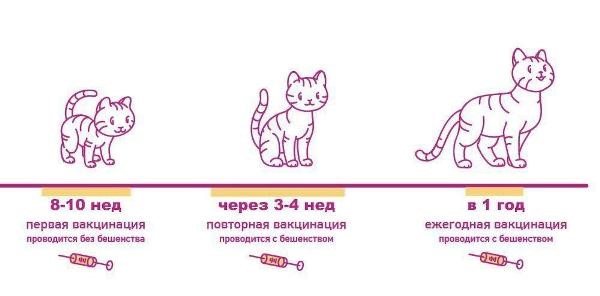
The vaccination calendar, which includes all mandatory vaccinations, is compiled individually by the veterinarian. In this case, the pet’s living conditions must be taken into account, whether there is a threat of infection with a particular disease, and how often cases of outbreaks of infectious diseases are recorded in the area.
The approximate vaccination schedule for cats by age looks like this:
- From 9 to 12 weeks. It is necessary to vaccinate against respiratory viral infections such as rhinotracheitis, panleukopenia, calicivirosis.
- At 12 weeks Get vaccinated against rabies.
- At 14-16 weeks. A second vaccination is given against viral infections transmitted by airborne droplets.
- Annual vaccinations for cats are done strictly according to schedule every 11-12 months. after the last vaccination.
The table contains standard vaccines that must be given to a cat:
| Disease | First vaccination, weeks. | Second vaccination, after how many weeks. | Revaccination |
| Rhinotracheitis | 9—12 | 2—4 | Every year |
| Calicivirus | |||
| Panleukopenia | |||
| Chlamydia | |||
| Peritonitis of infectious nature | 16 | 20 | |
| Trichophytosis, microsporia | 8 | 10 | |
| Rabies | 12 | – | 1-3 years |
Vaccine injection sites for cats

Vaccines (of any type) are one of the classes of injectable drugs that have been associated with the pathogenesis of Feline Injection Site Sarcoma (FISS), and particular attention has been paid to the administration of adjuvanted FeLV and rabies vaccines.
Post-injection sarcoma has been the subject of much research, and there are several new reviews on the subject (Martano et al. 2011, Srivastav et al. 2012, Ladlow 2013, Hartmann et al. 2015). Although the pathogenesis of post-injection sarcoma remains unknown, it is currently believed that a localized chronic inflammatory response leads to malignant transformation of mesenchymal cells and that this process has some genetic background.
The traditional site for most subcutaneous injections (including vaccines) in cats has been the interscapular area, where post-injection sarcoma often forms. Due to the infiltrative nature of these tumors, radical surgical resection (excision) is often necessary to remove them, although additional treatments are also used.
In North America, in recognition of this problem, it has been recommended that two adjuvanted vaccines, considered high-risk, be administered to specific anatomical sites where it will be easier to remove post-injection sarcoma if it occurs.
The “left leg leukaemia, right leg rabies” recommendation meant that FeLV vaccine should be administered in the distal left pelvic limb and rabies vaccine in the distal right leg. This recommendation is still included in the American Association of Feline Practitioners (AAFP) guidelines (Scherk et al. 2013), which also recommend that the three core feline vaccines be administered in the distal forelimb.
One study was conducted that assessed the effect of this practice by comparing the anatomical location of post-injection sarcoma in cats before the recommendation was adopted (1990-1996) and after its implementation in practice (1997-2006). The results showed that there were significantly fewer cases of post-injection sarcoma formation in the interscapular region, and more cases of tumor formation on the right (but not on the left) pelvic limb. Moreover, there has been an increase in the number of reports of tumors involving both the right hind limb and the right lateral (side) abdomen (12.5% - 25.0%) or the left hind limb and the left lateral abdomen (11.4% - 13. 8%). This has been attributed to the accidental release of drugs into these abdominal areas during inconvenient injections into the distal hind limbs. Outside of North America, this practice is not widespread.
A recent publication demonstrated the effectiveness of administering FPV and rabies vaccines to cats in the tail (Hendricks et al. 2014). Adult cats participating in the catch-and-return program received an injection of a three-part core MLV vaccine (FPV, FHV-1, FCV) into the distal third of the dorsal surface of the tail, and an inactivated rabies vaccine was administered 2 cm distal (below) the site of injection of the three-part vaccine. . Seroconversion occurred in all cats for FPV and in all but one for rabies virus. This small study reported that tail vaccination was well tolerated in cats.
In the 2010 WSAVA Vaccination Guidelines for Dogs and Cats, the VGG proposed an alternative option for administering the vaccine under the skin of the lateral chest or, better yet, the lateral abdomen (Day et al. 2010). Tail injection may be a safer alternative than distal limb or lateral body injection, but further research into this route of vaccine administration will be required. This issue remains controversial and ambiguous, and each practicing veterinarian must decide for himself which approach is convenient for use in his clinic. However, the following principles must be adhered to:
- The benefit of the protective immunity provided by vaccines outweighs any risk of developing post-injection sarcoma. Current estimates place the prevalence of post-injection sarcomas at 1 in every 5,000 to 12,500 vaccinated cats.
- Whenever possible, non-adjuvanted vaccines should be used in cats.
- Vaccines (especially adjuvanted ones) or other injectable drugs should not be administered into the interscapular area.
- Vaccines (especially adjuvanted ones) should be given subcutaneously (rather than intramuscularly) at other sites. Administration sites should be selected based on a balance between ease of surgical resection of post-injection sarcoma should it occur and an acceptable level of safety for the vaccinator (i.e., accidental self-administration of the vaccine when restraining a resistant animal must be avoided).
Vaccines should be administered at a different site each time. The injection site should be marked on a drawing in the patient’s medical history or vaccination passport, indicating there exactly which vaccines were administered in each specific case. Vaccine administration sites should be alternated. An alternative option within the clinic could be to select a single site for all staff to administer all cat vaccines during a given calendar year and change it for the following year.
The VGG encourages all suspected cases of post-injection sarcoma to be reported through the appropriate national channels for reporting suspected adverse events or to be notified directly to vaccine manufacturers.
- Translation from English. Document in English published in Journal of Small Animal Practice ¦ Vol 57 ¦ January 2021 ¦ © 2021 WSAVA
- Translation from English: S. T. Orlova, T. Yu. Malkova Edited by Doctor of Veterinary Sciences, Professor A. A. Sidorchuk December 31, 2021
Vaccination rules
The vaccination schedule, types and names of drugs are determined by the veterinarian. Vaccinating a kitten or an adult pet on your own is dangerous and is fraught with the development of negative consequences.
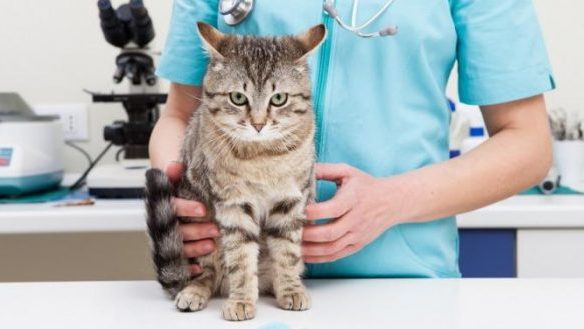
Before giving your pet the necessary vaccinations, you should first study the preventive rules to reduce the risk of complications:
- If the cat's mother was vaccinated before mating, the first vaccination should be given to the baby at the age of 12 weeks. If there is no vaccination before mating, it is recommended that the kitten be vaccinated at 8 weeks of age.
- Before vaccination, an examination by a veterinarian is required. To exclude the presence of an inflammatory process or any other disease in the body, it is better to undergo general clinical tests.
- Kittens start teething before they are one year old, so it is advisable that the teething and vaccination periods do not coincide.
- Vaccination of pregnant and lactating cats is prohibited.
- For the first time after vaccination, the animal should be under strict medical supervision, which will help eliminate possible complications.
- Within a month after the administration of the drug, any operations are prohibited, and stress is contraindicated.
Possible complications
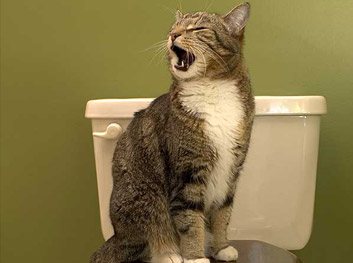
If the cat vaccination schedule and preparation rules are strictly followed, complications develop extremely rarely, but they are not completely excluded. After administration of the drug, the cat’s immunity is activated, as a result of which the load on the body increases. Therefore, during this period it is important to monitor the animal, not to let it become hypothermic, and to exclude other negative factors.
But even a completely healthy cat may experience deterioration in health after the vaccine. It is dangerous to delay a visit to the veterinarian if immediately after the injection the animal develops the following symptoms:
- nausea, vomiting;
- diarrhea, disturbing several times per hour;
- convulsions;
- excessive salivation;
- heartbeat disturbance;
- dyspnea;
- redness and inflammation at the injection site;
- increased body temperature;
- loss of consciousness or coma.
Choosing a syringe for injection
Instruments for pets are purchased at a regular pharmacy for people. There are three types of injections: intramuscular, subcutaneous, intravenous. Each option requires different syringes and needles.
For intramuscular
In this case, the injection is carried out into the muscle of the cat's back or front leg. Syringe volumes are allowed: 1, 2, 5, 10 ml. If you need to administer a dose of more than 1 ml, you need to choose three-component syringes. In addition to the needle and piston, the design includes a plunger that allows the needle to move gently. The black seal is located at the end of the piston where the needle is inserted.
After choosing the correct volume, you should decide on the needle. For a cat and especially a kitten, it is better to choose thin needles. When choosing a syringe with a capacity of 2.5 ml or more, take a 30x0.6 mm needle or from an “insulin syringe”.
“Insulin syringes” work well with doses less than 1 ml. They got their name from the frequent administration of insulin to diabetic patients. The tool has two positive characteristics. First, it has a plunger for gentle movement. Secondly, the needle is short. Beginners should not worry about the depth of the needle.
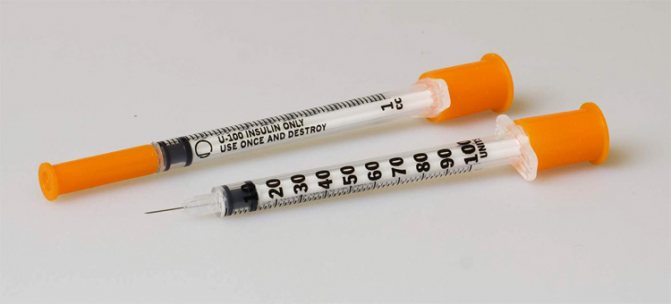
Important! The needle must be very sharp. If she was getting medicine through the rubber stopper, the needle should be replaced.
For subcutaneous
In this case, the injection is made into the withers of the animal. Since the skin here is soft, not so stretched, it has few nerve endings. The cat feels less and, therefore, tolerates even painful injections well.
The volume of the syringe can be different, but the needle should be chosen 30x0.6 ml. This is the case if the medicine is not oil-based.
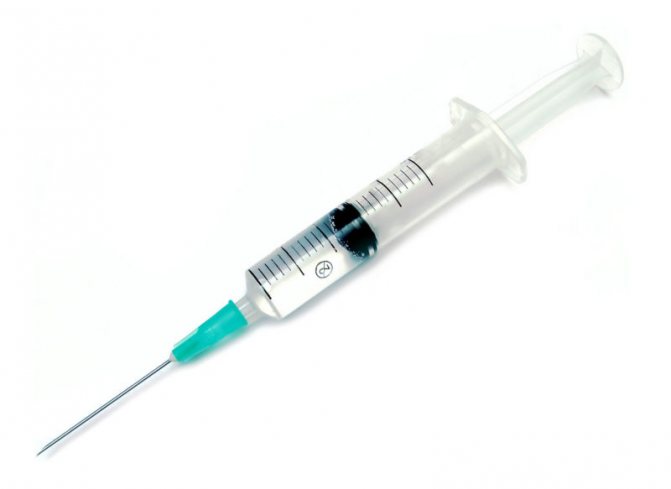
Often subcutaneous injections are accompanied by medications with an oily structure. To prevent the drug from clogging the passages in the needle, you need to choose needles of a larger diameter, since the oily and viscous structure of the drug hardens quickly. For example, if the syringe has a volume of 3 ml, then the needle should be selected 40x0.7 mm, etc.
Intravenous injection is carried out only by specialists.
The best vaccines
All drugs must have certificates certified by veterinary authorities. It is forbidden to use vaccines at your own discretion, without first consulting a veterinarian. The following vaccination preparations are considered effective:
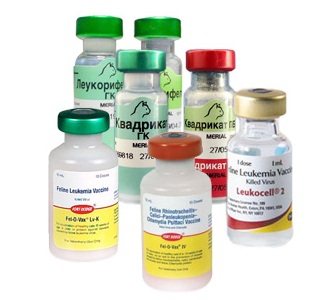
Some of the effective drugs for the procedure are Quadricat and Leucorifelin.
- "Nobivak Triket";
- "Quadricate";
- "Leukorifelin";
- "Multifel-4";
- "Fel-O-Wax";
- "Microderm";
- "Polivak TM for cats";
- "Multifel";
- "Rabizin"
Care after vaccinations
The cat may not feel very well for 3-4 days after the injection. The animal shows little activity, sleeps more, eats 1 instead of 2-3 times a day. This phenomenon is considered the norm, since the body has directed all its forces to fight the introduced infection. Therefore, during this period it is important not to disturb the pet, constantly monitor its well-being, provide warmth, comfort, protect it from stress, and feed it as needed. If the owner notices that his four-legged friend has become worse, you should not self-medicate, but seek help from a veterinary clinic as soon as possible.
Where is it better to get vaccinated at home or in a clinic?
Many people often wonder where it is better to get vaccinated - at home or in a veterinary clinic? Of course, if you have never encountered this procedure, then you should first consider all the pros and cons.
Many veterinarians recommend performing primary vaccinations at home. The fact is that in small animals the immunity is quite weakened, and contact with other sick patients can lead to infection. If the owner is afraid to do this procedure on his own, then many veterinary clinics offer a special service that makes it possible to call a doctor at home.
Calling a veterinarian to your home is a convenient procedure; it has a number of positive aspects:
- eliminates the need to take the animal to the veterinary clinic across the city;
- no need to sit in line for a long time;
- prevents infection of dangerous diseases from other animals that are brought to the clinic;
- Vaccinating a cat at home is much easier and does not cause severe stress in the animal.
But if it is not possible to vaccinate a cat at home, then the primary vaccination can be carried out at a veterinary clinic. You must follow the rules:
- the animal must be transported in a special sterile bag or carrier;
- a clean and sterile cloth or diaper should be placed under the pet;
- preventing contact of a cat with other infected animals in line.
Note! Vaccination in a veterinary clinic has only one advantage - the issuance of a veterinary passport, which will indicate all the vaccinations given. However, currently this service is also provided at home.
